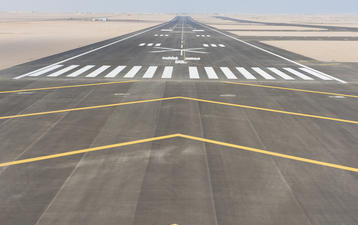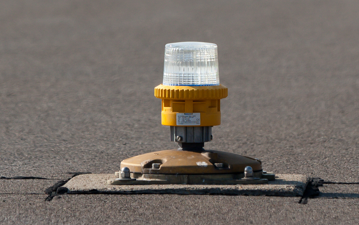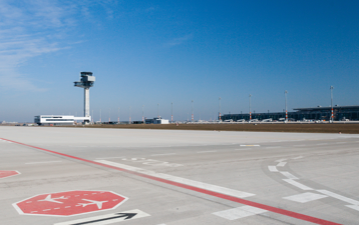Introduction to Passenger Terminal Planning & Design
The terminal represents one of the key elements of the airport infrastructure. It is the gateway for many visitors to a city and the residents to the rest of the world. Over the last few decades airport terminals have turned into more than just a gateway. By now terminals house various functions beyond the original transportation link under one roof. These additional functions range from shopping, working, entertainment, etc.
Terminals are also unique in the sense that the only constant is change. Due to a frequently changing passenger volume, passenger needs and other user requirements it is vital to develop the terminal on a regular basis accommodating recent trends of a dynamic aviation market within a rather static piece of infrastructure.
airsight’s 2-day training course has been designed to give an introduction to the topic for a wide range of professionals from different disciplines and backgrounds. The course will introduce the relevant strategic planning parameters and discuss benefits, challenges and potential pitfalls on the way to a successful Terminal. We explore the principles of terminal design, capacity assessment based on IATA standards identifying terminal expansion and re-configuration opportunities.
The course contains presentations on all main topics, which will be supported by group exercises, case studies and discussions.
Course Details
Location:BerlinLanguage:English
Date:22.05. - 23.05.2025
Duration:2 days
Provider:airsight GmbH
Course Fee
For courses in Berlin:
All customers will be charged 19% VAT.
The final price will be shown on your invoice.
Please note: If you want to register several particpants from your company but need a single invoice for each, please register each of them seperately.
Course Content
Introduction
- Terminal Planning and Design
- Terminal Capacity
Key strategic planning considerations
- Terminal Capacity assessment and demand analysis based on IATA LOS
- Passenger flow analysis
- Airport terminal conceptual design
- Airport access, landside facilities and airside facilities
Elements of the terminal planning process
- Identify terminal capacity and IATA Level of Service (LOS)
- Development of Programme of Requirements
- Development of terminal layouts and planning solutions
- Design of planning options and assessment against criteria
- Development of phasing solutions
Course Targets - Upon completing this course you will be able to:
- Participate actively in planning and optimization projects by addressing terminal design issues
- Improve how you integrate user and technical infrastructure requirements into your terminal
- Identify terminal capacity and IATA Level of Service (LOS)
- Identify opportunities for infrastructure improvements that can increase passenger convenience and revenue
Trainer
Mark Longrée, Dipl.-Ing.
Mark is a highly knowledgeable architect specialised in the field of Aviation & Transportation planning and design. He is the founder and managing director of an engineering design and management company based in Hamburg, Germany. Mark has 18 years of experience in airport master planning and terminal design whilst working as a senior aviation architect at HOK International Ltd and development architect at Frankfurt Airport.
He has extensive global experience in Project Development and Project Management for both the design of new terminals and the redesign of existing terminal infrastructure. His experience encompasses many large high-profile projects leading large project teams and coordinate multiple architecture and engineering disciplines.
Recent projects include various terminal planning projects at Frankfurt, Brussels, Nice, Lyons, Mactan Cebu, Nantes, Riyadh, Beijing and Amsterdam Schiphol.
Target Group
- Architects, engineers and planners
- Terminal managers
- Airport shareholders
Course Location
Participants are responsible for making their own travel arrangements. The accommodation and travel costs are at the charge of the participants. Please note that airsight does not perform any travel and hotel bookings for the participants. Rooms can however be booked directly by the participants by contacting the hotel.
The course fee includes the registration, training material and examination. For non-virtual courses, coffee breaks and business lunch are also included.
Organisational Details
The course hours are scheduled as follows:
first training day: 10:00 am - 5:00 pm
last training day: 8:00 am - 4:00 pm
Coffee breaks and business lunch are included in the course fee. At the end of the course, all participants will receive an airsight certificate based on EASA training regulations, which is highly recognised throughout the aviation industry.
About airsight Training
airsight Training course quality
airsight operates an ISO 9001 certified Quality Management System and pursues the objective to provide high quality services that fully meet the clients’ needs.
Course Details
Location:In-houseLanguage:German / English
Duration:3 days
Provider:airsight GmbH
Course Content
Introduction
- Terminal Planning and Design
- Terminal Capacity
Key strategic planning considerations
- Terminal Capacity assessment and demand analysis based on IATA LOS
- Passenger flow analysis
- Airport terminal conceptual design
- Airport access, landside facilities and airside facilities
Elements of the terminal planning process
- Identify terminal capacity and IATA Level of Service (LOS)
- Development of Programme of Requirements
- Development of terminal layouts and planning solutions
- Design of planning options and assessment against criteria
- Development of phasing solutions
Course Targets - Upon completing this course you will be able to:
- Participate actively in planning and optimization projects by addressing terminal design issues
- Improve how you integrate user and technical infrastructure requirements into your terminal
- Identify terminal capacity and IATA Level of Service (LOS)
- Identify opportunities for infrastructure improvements that can increase passenger convenience and revenue
Trainer
Mark Longrée, Dipl.-Ing.
Mark is a highly knowledgeable architect specialised in the field of Aviation & Transportation planning and design. He is the founder and managing director of an engineering design and management company based in Hamburg, Germany. Mark has 18 years of experience in airport master planning and terminal design whilst working as a senior aviation architect at HOK International Ltd and development architect at Frankfurt Airport.
He has extensive global experience in Project Development and Project Management for both the design of new terminals and the redesign of existing terminal infrastructure. His experience encompasses many large high-profile projects leading large project teams and coordinate multiple architecture and engineering disciplines.
Recent projects include various terminal planning projects at Frankfurt, Brussels, Nice, Lyons, Mactan Cebu, Nantes, Riyadh, Beijing and Amsterdam Schiphol.
Richard Chapman, Dip.Arch.
Richard is a qualified Architect and has over 25 years of experience in the aviation sector. He has developed extensive knowledge and expertise in airport master planning, the planning and design of terminal central processors, piers and satellites, optimization of capacity and floor area calculations, provision of IATA/mandated levels of service and the integration of commercial and operational requirements. His expertise covers project definition, developing the business case, CAPEX/OPEX modelling, retail planning, aviation related commercial development and airport facility buildings including MRO’s, FBO’s, cargo terminals, workshops and training facilities.
Richard led technical advisor and design teams on a variety of airport projects throughout the world, including the GMR concession bid for New Delhi and Mumbai airports and subsequently as country Project Director and Design Leader for the new terminal T3 (30mppa) at Indira Gandhi International Airport and re-modelling of the existing international terminal T2.
Organisational Details
airsight offers this training course on request, worldwide. At the end of the course, all participants will receive an airsight certificate based on EASA training regulations, which is highly recognised throughout the aviation industry.
About airsight Training
airsight Training course quality
airsight operates an ISO 9001 certified Quality Management System and pursues the objective to provide high quality services that fully meet the clients’ needs.




